Decomposition and Decoupling Analysis of the Driving Factors of the “Water–Carbon–Ecological” Footprint in the Eleven Provinces and Municipalities of the Yangtze River Economic Belt
Abstract
1. Introduction
2. Materials and Methods
2.1. Computational Approach for Water Footprint
2.2. Computational Method for Carbon Footprint
2.2.1. Carbon Emissions
2.2.2. Carbon Absorption
2.3. Computational Method for Ecological Footprint
2.4. “Water–Carbon–Ecosystem” Footprint Kaya–LMDI Driving Factor Decomposition
2.4.1. Water Footprint Kaya–LMDI Factor Decomposition Method
2.4.2. Carbon Footprint Kaya–LMDI Factor Decomposition Method
2.4.3. Ecological Footprint Kaya–LMDI Factor Decomposition Method
2.5. “Water–Carbon–Ecological” Footprint Drivers Tapio Decoupling Analysis
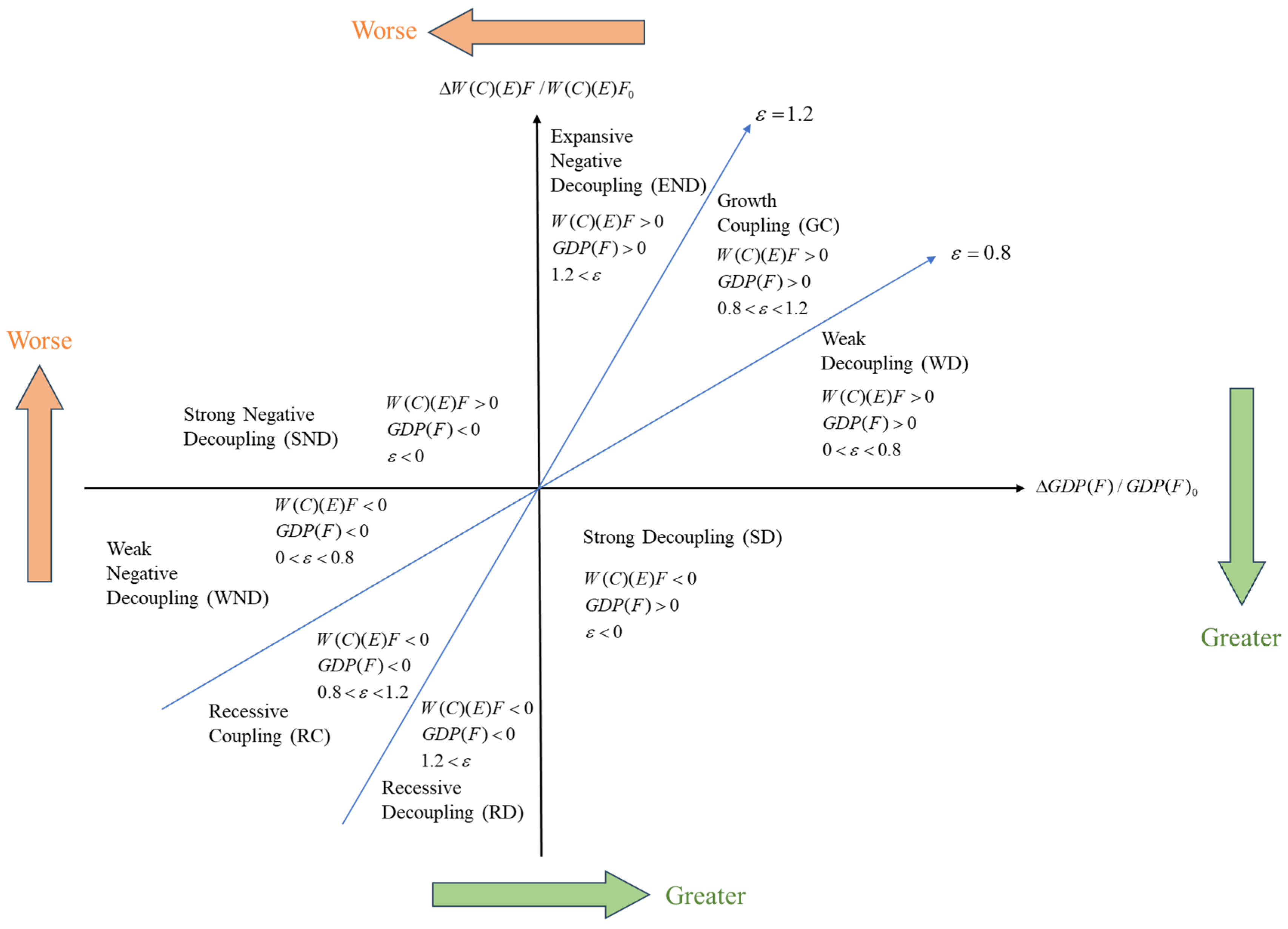
2.6. Data Sources
3. Results and Discussion
3.1. Spatio-Temporal Evolution Characteristics of the Footprint Family
3.1.1. Spatio-Temporal Characteristics of the Water Footprint
3.1.2. Spatio-Temporal Evolution Characteristics of Carbon Footprint
3.1.3. Spatio-Temporal Evolution Characteristics of Ecological Footprint
3.2. Decomposition of Driving Factors of the Footprint Family
3.2.1. Decomposition of Driving Factors of the Water Footprint by LMDI
3.2.2. Decomposition of Driving Factors of Carbon Footprint by LMDI
3.2.3. Decomposition of Driving Factors of Ecological Footprint by LMDI
3.3. Decoupling Analysis of Footprint Family Driving Factors
3.3.1. Decoupling Analysis of Water Footprint (Tapio)
3.3.2. Decoupling Analysis of Carbon Footprint
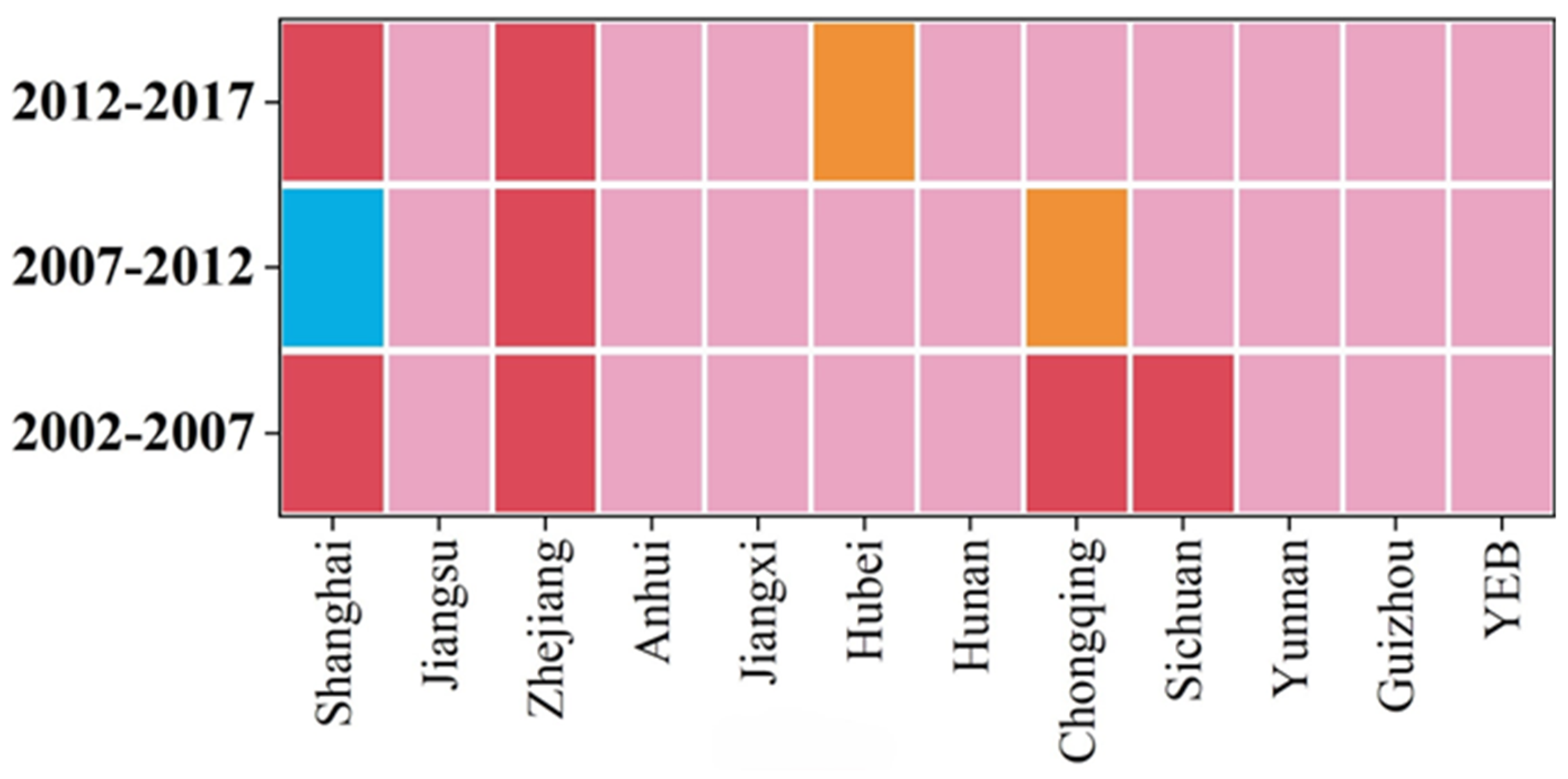
3.3.3. Tapio Decoupling Analysis of Ecological Footprint

4. Conclusions
4.1. Conclusions
4.2. Policy Recommendations
Author Contributions
Funding
Data Availability Statement
Conflicts of Interest
References
- Ciupek, B.; Brodzik, Ł.; Frąckowiak, A. Research on Carbon Footprint Reduction During Hydrogen Co-Combustion in a Turbojet Engine. Energies 2024, 17, 5397. [Google Scholar] [CrossRef]
- Deng, L.; Xu, Y.; Xue, F.; Pei, Z. Mining interpretable fuzzy If-Then linguistic rules from energy and economic data to forecast CO [formula omitted] emissions of regions in China. Energy 2024, 313, 133631. [Google Scholar] [CrossRef]
- Guo, J.; Wei, Z.; Xie, X.; Ren, J.; Zhou, H. Dynamic change and driving force of natural capital in Qinghai Province based on the three-dimensional ecological footprint, China. Ecol. Indic. 2022, 145, 109673. [Google Scholar] [CrossRef]
- Lai, Z.; Li, L.; Huang, M.; Tao, Z.; Shi, X.; Li, T. Spatiotemporal evolution and decoupling effects of sustainable water resources utilization in the Yellow River Basin: Based on three-dimensional water ecological footprint. J. Environ. Manag. 2024, 366, 121846. [Google Scholar] [CrossRef]
- Lerpiniere, J.D.; Wilson, C.D.; Velis, A.C. Official development finance in solid waste management reveals insufficient resources for tackling plastic pollution: A global analysis of two decades of data. Resour. Conserv. Recycl. 2025, 212, 107918. [Google Scholar] [CrossRef]
- Liu, Q.; Chen, T.; Zhang, N.; Ye, Z.; Jiang, K.; Lin, Z.; Gao, Y.; Guo, Y.; Weng, A. Green energy meets urban agriculture: Unveiling the carbon reduction potential of Rooftop Agrivoltaics. J. Clean. Prod. 2024, 480, 144110. [Google Scholar] [CrossRef]
- Ma, X.; Liu, C.; Niu, Y.; Zhang, Y. Spatiotemporal pattern and prediction of agricultural blue and green water footprint scarcity index in the lower reaches of the Yellow River Basin. J. Clean. Prod. 2024, 437, 140691. [Google Scholar] [CrossRef]
- Tian, L.; Chai, J.; Zhang, X.; Pan, Y. Spatiotemporal evolution and driving factors of China’s carbon footprint pressure: Based on vegetation carbon sequestration and LMDI decomposition. Energy 2024, 310, 133299. [Google Scholar] [CrossRef]
- Niccolucci, V.; Galli, A.; Reed, A.; Neri, E.; Wackernagel, M.; Bastianoni, S. Towards a 3D National Ecological Footprint Geography. Ecol. Model. 2011, 222, 2939–2944. [Google Scholar] [CrossRef]
- Wang, L.Z.; Tao, F.; Leng, J.H.; Wang, Y.-H.; Zhou, T. multi-scale analysis on sustainability and driving factors based on three-dimensional ecological footprint: A case study of the Yangtze River Delta region, China. J. Clean. Prod. 2024, 436, 140596. [Google Scholar] [CrossRef]
- Lin, C.; Li, X. Carbon peak prediction and emission reduction pathways exploration for provincial residential buildings: Evidence from Fujian Province. Sustain. Cities Soc. 2024, 102, 105239. [Google Scholar] [CrossRef]
- Liu, Q.; Li, F.; Dong, S.; Cheng, H.; Liang, L.; Xia, B. Spatial-temporal heterogeneity of sustainable development goals and their interactions and linkages in the Eurasian continent. Sustain. Prod. Consum. 2024, 52, 151–165. [Google Scholar] [CrossRef]
- Sun, D.; Cai, S.; Yuan, X.; Zhao, C.; Gu, J.; Chen, Z.; Sun, H. Decomposition and decoupling analysis of carbon emissions from agricultural economic growth in China’s YREB. Environ. Geochem. Health 2022, 44, 2987–3006. [Google Scholar] [CrossRef]
- Wang, M.; Huang, X.; Dong, Y.; Song, Y.; Wang, D.; Li, L.; Qi, X.; Lin, N. Spatiotemporal drivers of agricultural non-point source pollution: A case study of the Huang-Huai-Hai Plain, China. J. Environ. Manag. 2024, 370, 122606. [Google Scholar] [CrossRef] [PubMed]
- Xie, P.; Shu, Y.; Sun, F.; Li, P. Decoupling economic development from carbon emissions: Insights from Chinese provinces. Energy 2024, 308, 133008. [Google Scholar] [CrossRef]
- Yang, X.; Fan, Y.; Yao, Y.; Tan, M.; Xu, H. Temporal and spatial variations of land carbon loss caused by animal-sourced foods consumption in China and the driving factors. Environ. Impact Assess. Rev. 2024, 109, 107644. [Google Scholar] [CrossRef]
- Zhang, L.; Li, H.; Yang, L.; Du, X.; Zhou, Y.; Sun, G.; Liu, J. Carbon footprints of centralized and decentralized food waste utilization pathways. Renew. Sustain. Energy Rev. 2025, 208, 115040. [Google Scholar] [CrossRef]
- Zhang, Y.; Bian, Z.; Guo, X.; Wang, C.; Guan, D. Strategic land management for ecosystem Sustainability: Scenario insights from the Northeast black soil region. Ecol. Indic. 2024, 168, 112784. [Google Scholar] [CrossRef]
- Zhao, D.; Wang, W.; Ji, X.; Wu, P.; Zhuo, L. Nitrogen cycling and associated grey water footprint in croplands under different irrigation practices. J. Clean. Prod. 2024, 480, 144081. [Google Scholar] [CrossRef]
- Zhao, Y.; Gao, G.; Zhang, J.; Yu, M. Impact of carbon tax on green building development: An evolutionary game analysis. Energy Policy 2024, 195, 114401. [Google Scholar] [CrossRef]
- Zhou, W.; Chi, Y.; Tang, S.; Hu, Y.; Wang, Z.; Zhang, X. The evolution analysis of low-carbon power transition strategies and carbon emission decoupling based on carbon neutrality target. Energy 2024, 311, 133298. [Google Scholar] [CrossRef]
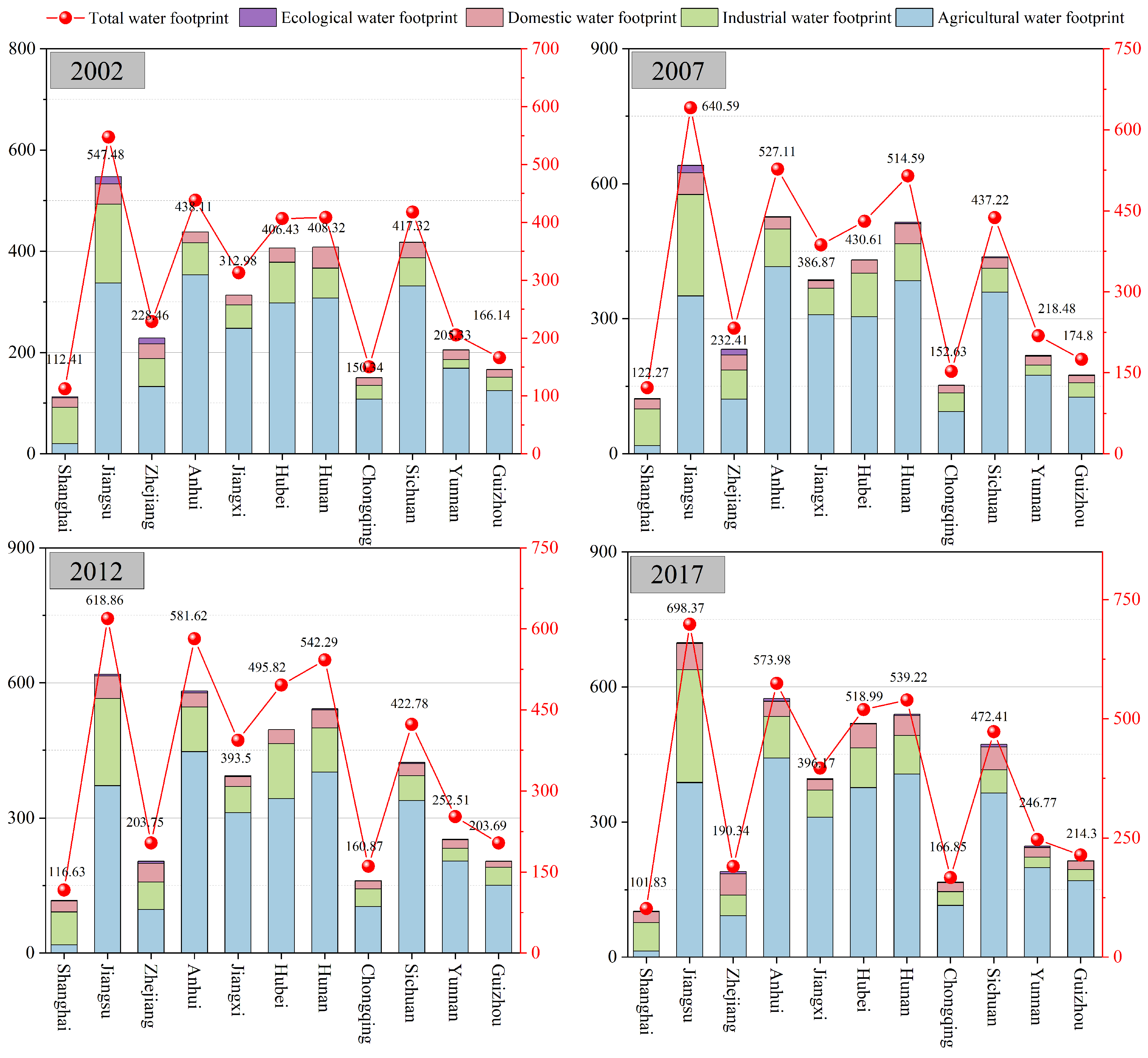
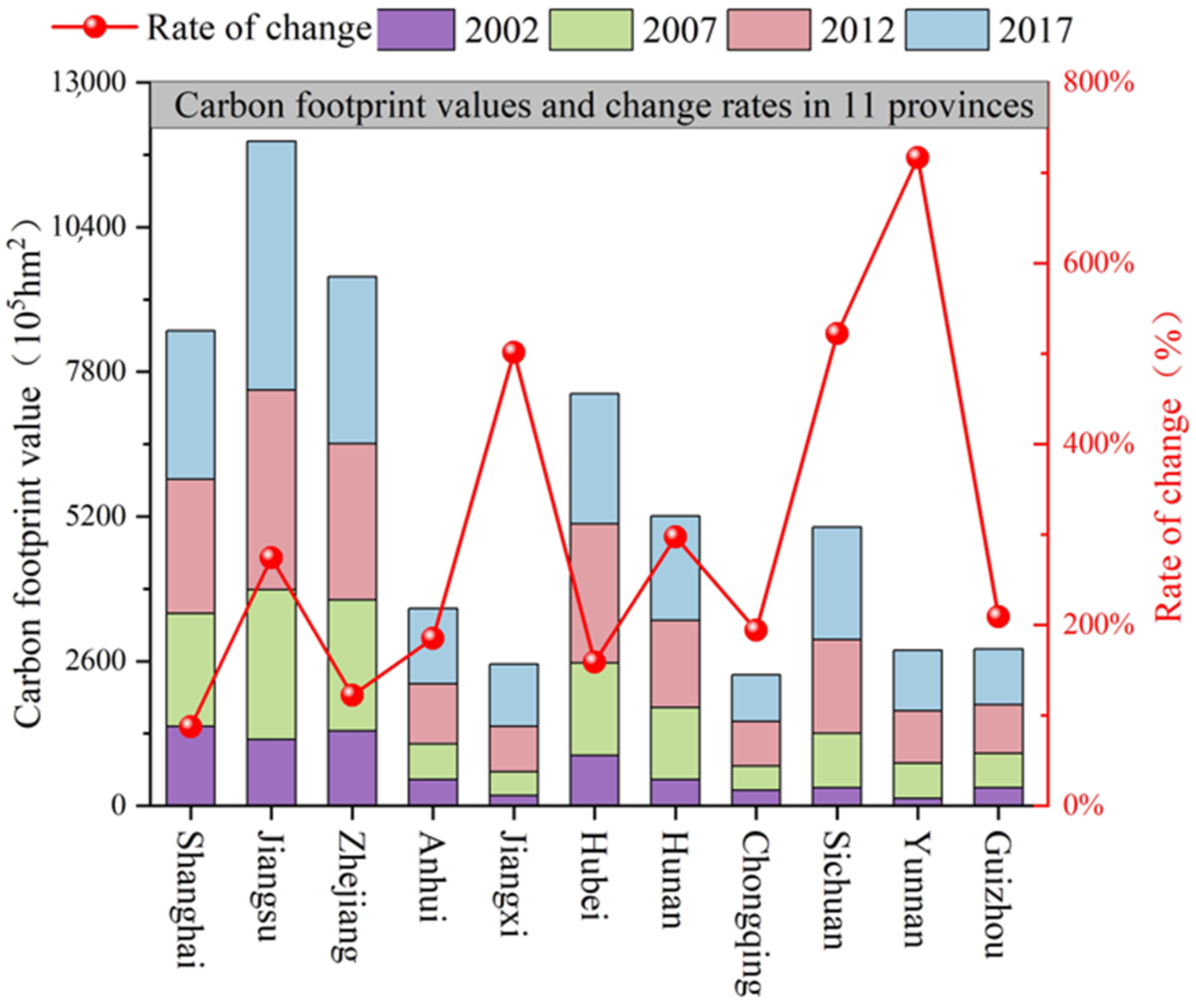


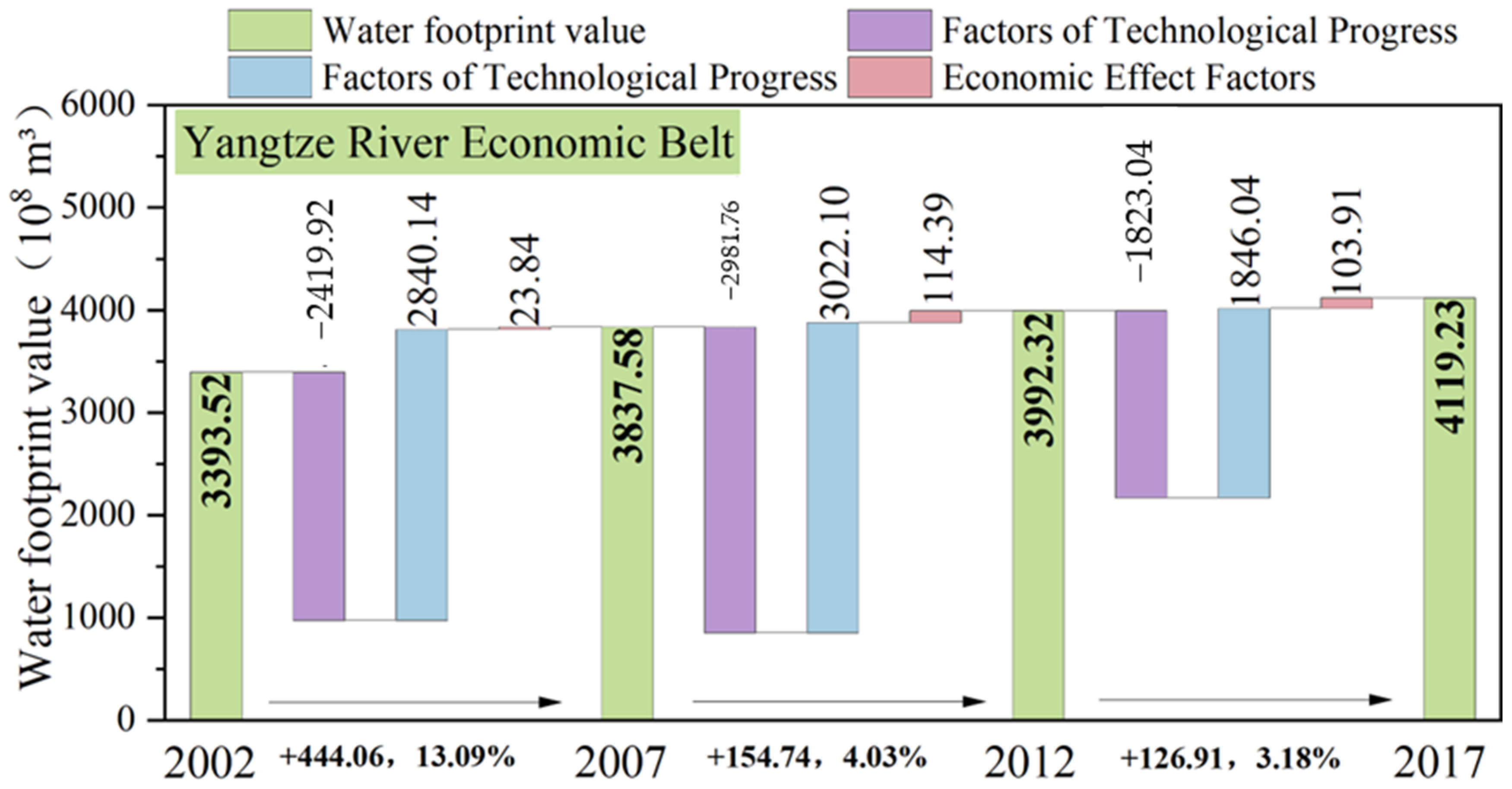
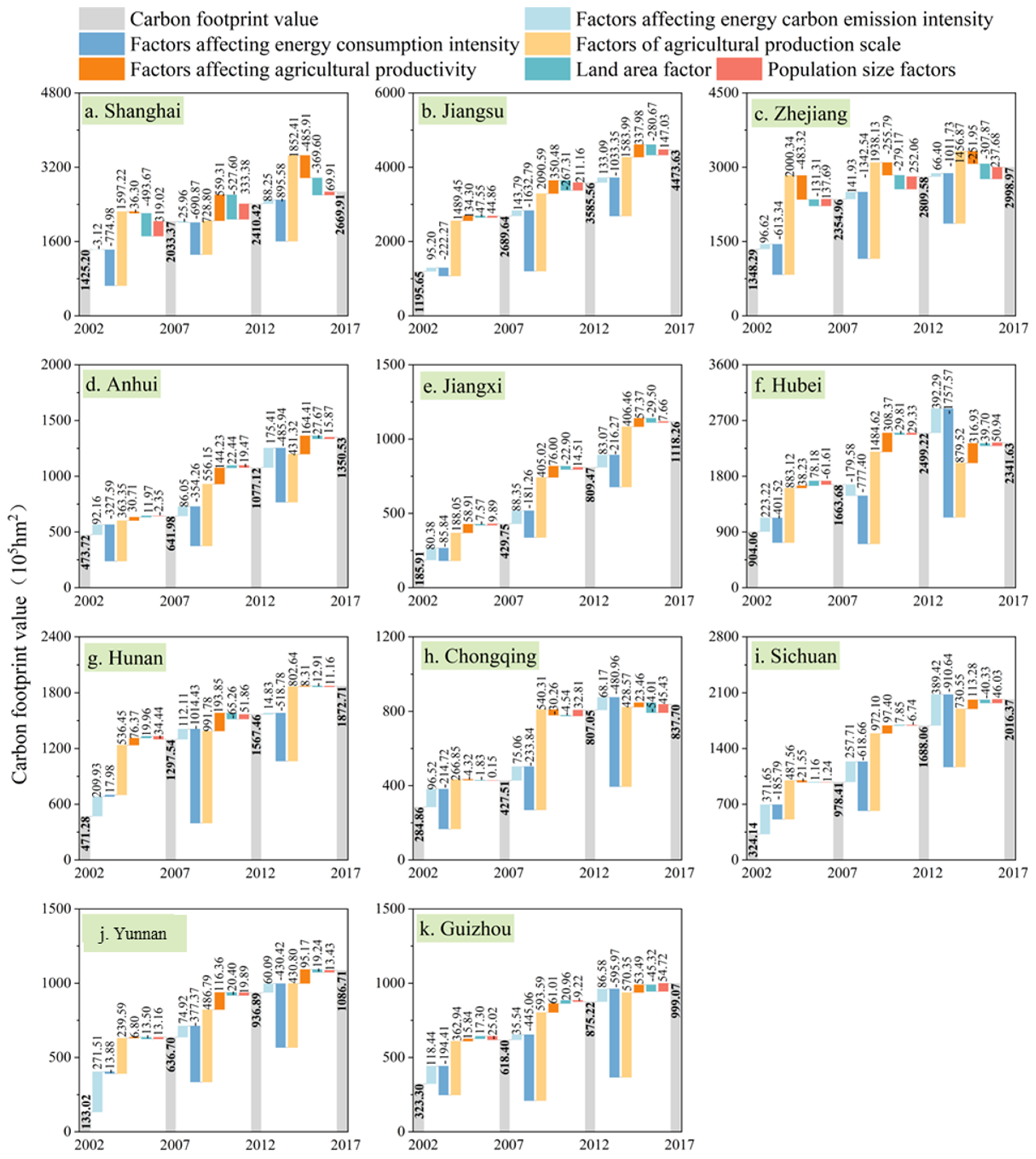
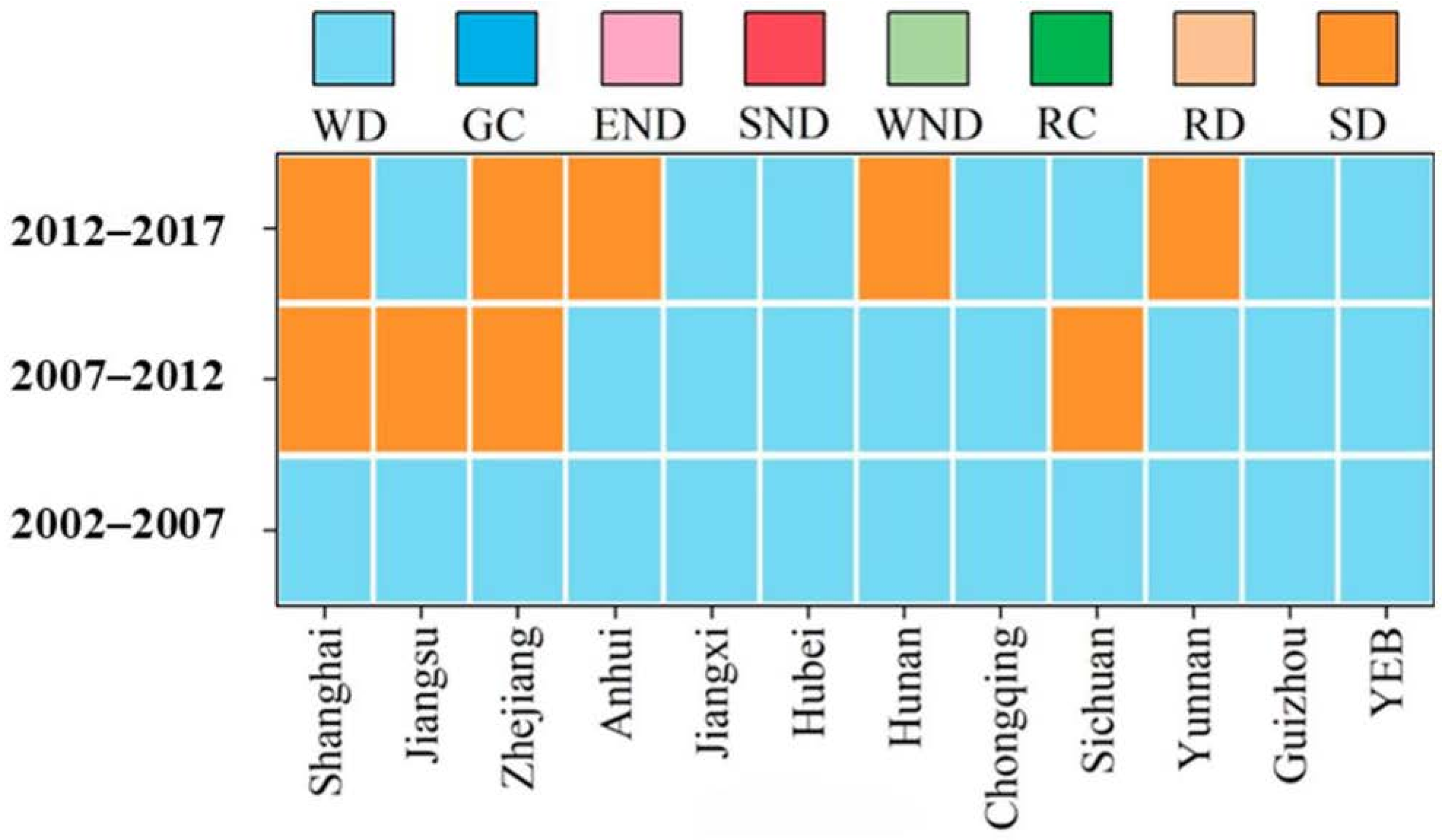
| Account of Biological Resources | Product | Energy Account | Product |
|---|---|---|---|
| Cultivated land | Soybeans, oilseeds, wheat, corn, rice, vegetables, potatoes, cotton, flax, tobacco, sugar beets | Land for fossil energy | Raw coal, coke, crude oil, gasoline, kerosene, diesel, fuel oil, liquefied petroleum gas, and natural gas |
| Forest land | Tea, fruits | ||
| Grassland | Pork, beef, lamb, milk, and eggs | Construction land | Electricity |
| Water area | Aquatic products |
Disclaimer/Publisher’s Note: The statements, opinions and data contained in all publications are solely those of the individual author(s) and contributor(s) and not of MDPI and/or the editor(s). MDPI and/or the editor(s) disclaim responsibility for any injury to people or property resulting from any ideas, methods, instructions or products referred to in the content. |
© 2025 by the authors. Licensee MDPI, Basel, Switzerland. This article is an open access article distributed under the terms and conditions of the Creative Commons Attribution (CC BY) license (https://creativecommons.org/licenses/by/4.0/).
Share and Cite
Li, J.; Han, Y.; Zhao, M. Decomposition and Decoupling Analysis of the Driving Factors of the “Water–Carbon–Ecological” Footprint in the Eleven Provinces and Municipalities of the Yangtze River Economic Belt. Sustainability 2025, 17, 3645. https://doi.org/10.3390/su17083645
Li J, Han Y, Zhao M. Decomposition and Decoupling Analysis of the Driving Factors of the “Water–Carbon–Ecological” Footprint in the Eleven Provinces and Municipalities of the Yangtze River Economic Belt. Sustainability. 2025; 17(8):3645. https://doi.org/10.3390/su17083645
Chicago/Turabian StyleLi, Jinhang, Yuping Han, and Mengdie Zhao. 2025. "Decomposition and Decoupling Analysis of the Driving Factors of the “Water–Carbon–Ecological” Footprint in the Eleven Provinces and Municipalities of the Yangtze River Economic Belt" Sustainability 17, no. 8: 3645. https://doi.org/10.3390/su17083645
APA StyleLi, J., Han, Y., & Zhao, M. (2025). Decomposition and Decoupling Analysis of the Driving Factors of the “Water–Carbon–Ecological” Footprint in the Eleven Provinces and Municipalities of the Yangtze River Economic Belt. Sustainability, 17(8), 3645. https://doi.org/10.3390/su17083645





